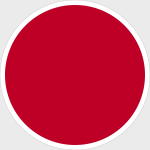DeAgostini DAWF36 Imperial Japanese Navy Mitsubishi J8M Shusui Rocket-Powered Interceptor (1:72 Scale)
"We have resolved to endure the unendurable and suffer what is insufferable."
- Japanese Emperor Hirohito, after the Hiroshima bombing
 The Mitsubishi J8M Shusui (literally "Autumn Water", used as a poetic term meaning "Sharp Sword" deriving from the swishing sound of a sword) was a Japanese World War II rocket-powered interceptor aircraft closely based on the German Messerschmitt Me 163 Komet. Built as a joint project for both the Navy and the Army Air Services, it was designated J8M (Navy) and Ki-200 (Army).
The Mitsubishi J8M Shusui (literally "Autumn Water", used as a poetic term meaning "Sharp Sword" deriving from the swishing sound of a sword) was a Japanese World War II rocket-powered interceptor aircraft closely based on the German Messerschmitt Me 163 Komet. Built as a joint project for both the Navy and the Army Air Services, it was designated J8M (Navy) and Ki-200 (Army).
The J8M1 was intended to be a license-built copy of the Messerschmitt Me 163 Komet. Difficulties in shipping an example to Japan meant that the aircraft eventually had to be reverse-engineered from a flight operations manual and other limited documentation. A single prototype was tested before the end of World War II.
The Japanese were aware of the results of the strategic bombing of Germany, and knew that the B-29 Superfortress would be bombing Japan and the resultant problems which would arise from trying to combat this. Japanese military attaches had become aware of the Komet during a visit to the Bad Zwischenahn airfield of Erprobungskommando 16, the Luftwaffe evaluation squadron charged with service test of the revolutionary rocket-propelled interceptor. They negotiated the rights to license-produce the aircraft and its Walter HWK 509A rocket engine. The engine licence alone cost the Japanese 20 million Reichsmarks (equivalent to 74 million 2017 euros).
The agreement was for Germany to provide the following by spring 1944:
Pictured here is a 1:72 scale replica of Mitsubishi's prototype J8M Shusui Rocket-Powered Interceptor.
Now in stock!
Dimensions:
Wingspan: 6-1/2-inches
Length: 5-inches
Release Date: August 2021
Historical Account: "Hagakure-Tai" - On January 8th, 1945, one of the two J8M1 prototypes was towed aloft, water ballast added in place of the fuel tank and rocket engine to test its aerodynamics. The test flights confirmed the design. Training courses for JAAF and JNAF pilots began on the Ku-53 glider, which shared a similar configuration to the J8M1. The 312th Naval Air Group was selected to operate the first J8M1. Mitsubishi, Fuji Hikoki, and Nissan Jidosha all had tooling for mass production well into the advanced stages, ready to produce both the J8M1 and the J8M2 variant, which differed from the J8M1 in sacrificing one of the Type 5 cannon for a small increase in fuel capacity. The first J8M1 prototype to be equipped with the Toko Ro.2 (KR10) was ready in June 1945. They were then transferred from the Nagoya plant to Yokoku for final checks before powered flight testing, after final glide tests with the engine installed.
The J8M took to the air for its first powered flight on July 7th, 1945, with Lieutenant Commander Toyohiko Inuzuka at the controls; after his "sharp start" rocket-powered takeoff, Inuzuka successfully jettisoned the dolly upon becoming airborne and began to gain speed, climbing skywards at a 45 degree angle. At an altitude of 400 m (1,300 ft), the engine stopped abruptly and the J8M1 stalled. Inuzuka managed to glide the aircraft back, but clipped a small building at the edge of the airfield while trying to land, causing the aircraft to burst into flames. Inuzuka died the next day. While Mitsubishi and naval technicians sought to find the cause of the accident, all future flights were grounded. The engine cutout had occurred because the angle of climb, coupled with the fuel tanks being half-filled for this first flight, caused a shifting of the fuel, which in turn caused an auto cutout device to activate because of an air lock in the fuel line. Requests to continue flight testing were denied pending the modification of the fuel pumps in the aircraft. The sixth and seventh prototypes were to be fitted with the modified Ro.2 engine.
Full-scale production readiness was almost at hand, and component construction was already underway. Flight testing was to resume, despite another explosion of the fuel mixture during a ground test days after the crash, in late August 1945 and the J8M2 design was finalized. But on 15 August 1945, the war ended for the Japanese and all work on the J8M ceased. The end of the war also spelled the end of the JAAF's Ki-202 Shūsui-Kai (Modified Shusui), whose design had begun in secret months before. The Ki-202 was to offer improved flight endurance over the Ki-200 and was slated to be the priority fighter for the JAAF in 1946, but no metal was cut before Japan's surrender.
Germany tried to send another Komet in U-864, but the submarine was sunk near Bergen by British submarine HMS Venturer in February 1945.
As with many other Japanese fighter types combating air raids over Japan, the Ki-200 was considered for use in ramming attacks against B-29s. The envisioned mission profile was to make one or two firing passes and then, with the remaining energy, conduct a ramming attack. Any fuel left on board would most likely detonate, increasing the effectiveness of the attack, but also meaning the pilot had little chance of survival. Nevertheless, the cost was deemed to be worth it and plans were being drawn up to form a "Hagakure-Tai" (Special Attack Unit), similar to the German Sonderkommando Elbe, when the war ended.


